Research Report | Game "POC", Can Space Nation's New Model Make People "Addicted"?
1. Project Overview
The game background of Space Nation is a vast space world — the Telikos galaxy. Begin a journey of survival, exploration, and warfare in the depths of the universe. As the captain of a spaceship, navigate through dangerous environments, interact with various species, and uncover the secrets of ancient space ruins. From resource gathering to interstellar combat, from political alliances to cultural exploration, every choice is filled with challenges, and every decision has far-reaching consequences. Utilizing the latest virtual reality and augmented reality technologies, Space Nation offers an unprecedented immersive experience.
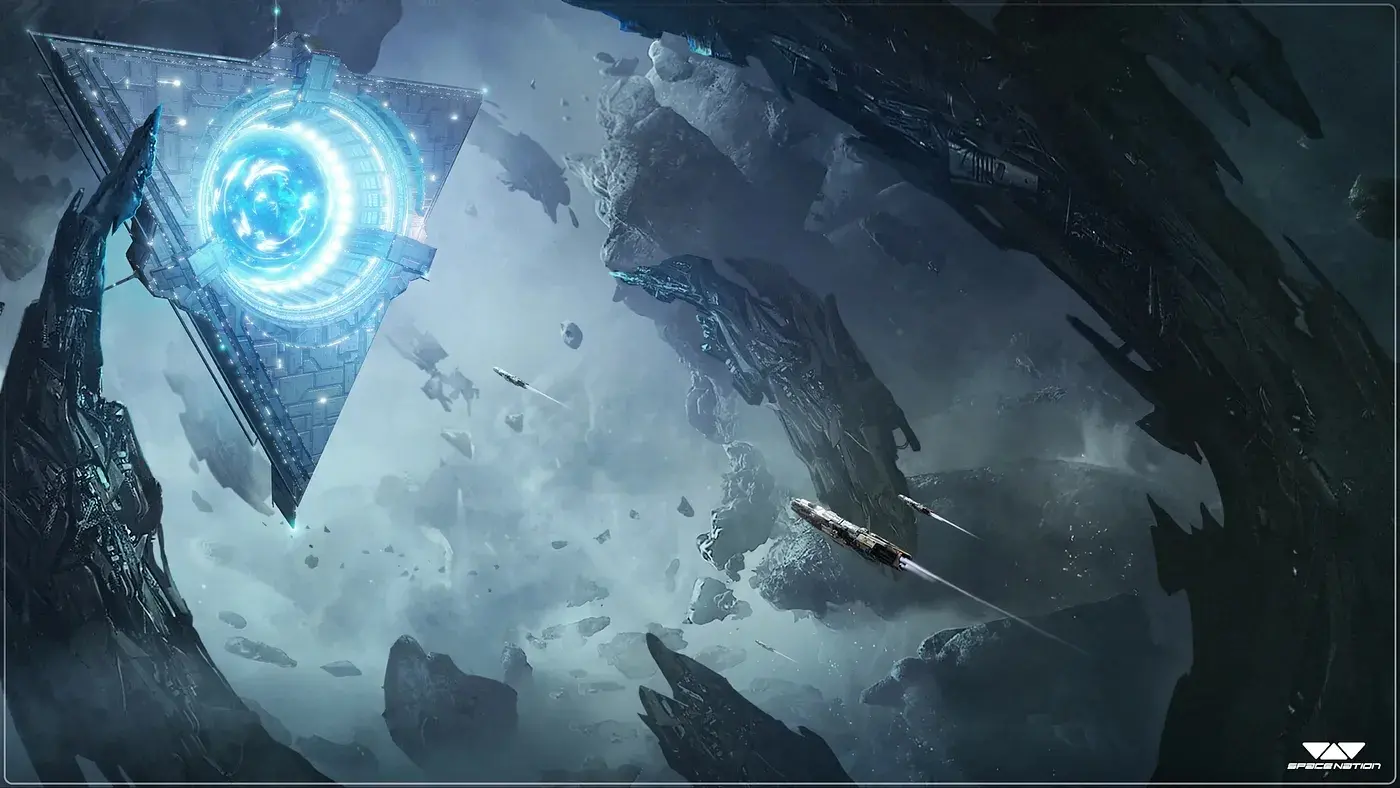
Space Nation focuses on building a complex and sustainable game economy on the Web3 track, integrating P4F (Play for Fun) and P2E elements, making it appealing to a large number of Web2 gamers and selected Web3 users.
Recently, Space Nation and OKX jointly launched a co-branded spaceship during the Space Nation anniversary celebration. The released spaceship is the Bering X-pathfinder Edition, a limited edition exploration ship from Space Nation, featuring significant OKX design elements and unique exploration gameplay in the game.
Keywords: AAA masterpiece; space sci-fi; POC model; team strength; AI
2. Game Ecology
Here’s a brief overview of the game asset sales and operational situation:
Space Nation's NFTs are divided into two categories: one is equity NFTs, including Genesis NFTs and PFPs; the other is game item NFTs, including various warships and ships, with some yet to be disclosed:
- Note: The indicated floor price is as of May 15, 2024.
Equity NFTs
- Genesis NFT — Alpha Gate
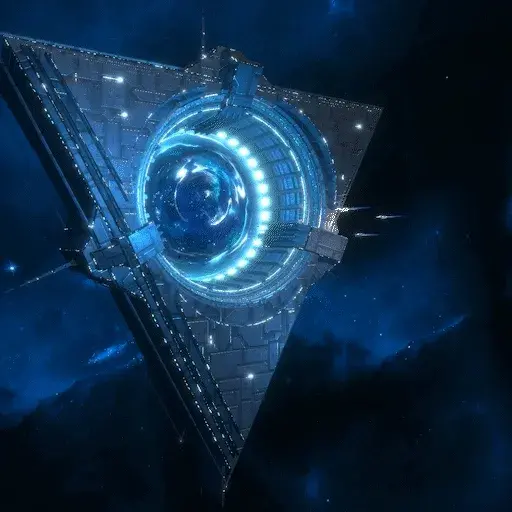
● Airdrops, whitelist, and $OIK rewards for various assets
● Priority purchase rights
● Priority participation rights
● Privileges for online and offline private events
Total supply: 515; Team retention: 55
Mint price: Free Mint
Floor price: 4 ETH
- Collaboration — Space Nation: Ape Odyssey NFT

● 1 Prime Navigator PFP
● Special achievement mechanism + $OIK distribution bonuses
● T1/T2/T3 mining ship NFT whitelist
● More rights in the future
Total supply: 300
Mint price: 0.3 ETH or equivalent $APE
Floor price: 0.17 ETH
Note: This collaborative NFT has already airdropped Genesis PFPs and obtained mining ship whitelists. If all monkey NFT holders complete the tasks, in less than 2 months, it has stabilized at over 10X, indicating that the potential value of the NFT itself is higher.
- PFP — The Prime Navigator
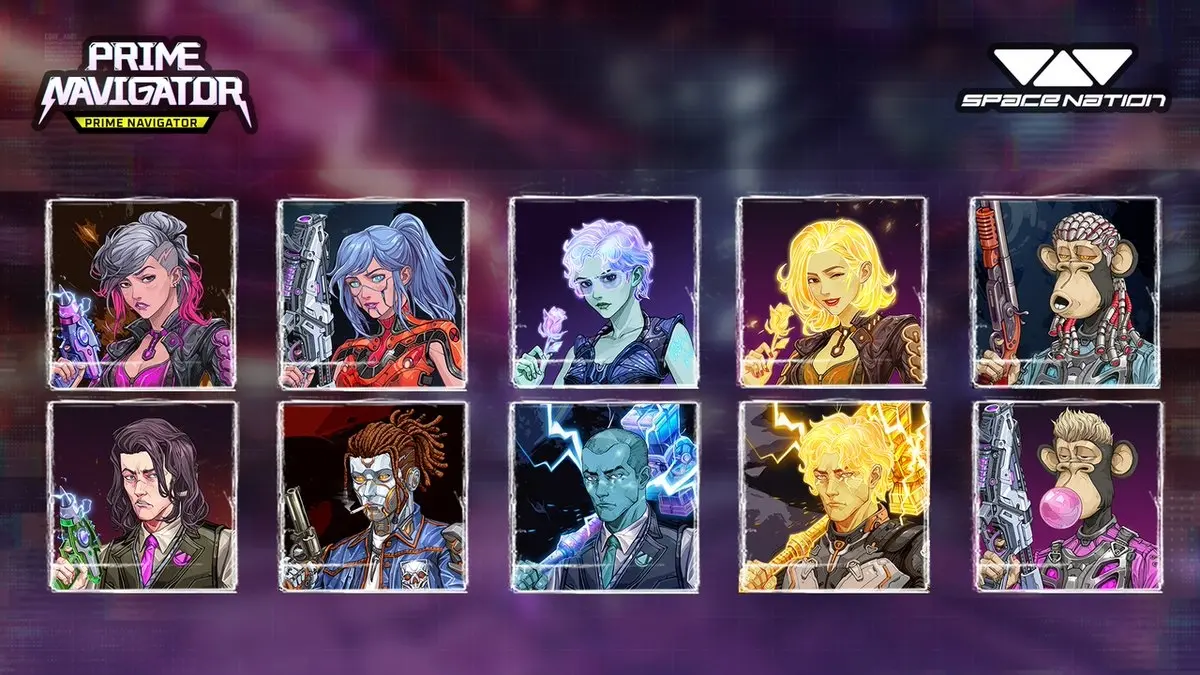
● Governance token $OIK airdrop
● Logistikos bonuses — earn more ecological rewards
● Early access to closed beta and future game versions
● Various privileges in the ecosystem and community customization features
Total supply: 3056, 300 airdropped to $APE Launchpad
Mint price: Whitelist 0.3 ETH, public sale 0.4 ETH
Floor price: 0.78 ETH
Item NFTs
Currently, the spaceship selection interface features over a dozen ships, categorized into battleships, mining ships, and exploration ships, each with distinct characteristics, attack power, and handling. Every player joining the game will receive a T0 spaceship for free.
- T0: The spaceship Grey Fox is generally not used, has limited weapon capacity, and is replaced by T1.
- T1: The spaceship Executor has the most balanced stats, can carry three weapons, and has decent speed, agility, and attack power. It has an advantage when competing for resources.
- T2: The spaceship Humpback Whale has greater power than T1 but is difficult to maneuver and has poor agility, making it a disadvantage in resource competition.
- T3: The spaceship Farsel is widely used due to its capacity to carry four weapons. Although it is the heaviest and slowest, it relies on turrets for turning, which significantly increases its flexibility, and it has the longest attack range, capable of carrying high-power exclusive weapons.
- Currently, only T0-T2 combat ships are available for testing.
Spaceships are classified into 7 levels from T0 to T6, with most ships in the game being collected by players through mining minerals and materials and blueprints, or purchased from other players. The project team will only very cautiously sell a limited number of special ships at lower prices. Ships of T4 and above can only be built by players and guilds in the game to ensure game balance is not affected.
Based on the above logic, the currently released equipment NFTs include:
- Purple Ship — Enforcer Founder Edition Spaceship
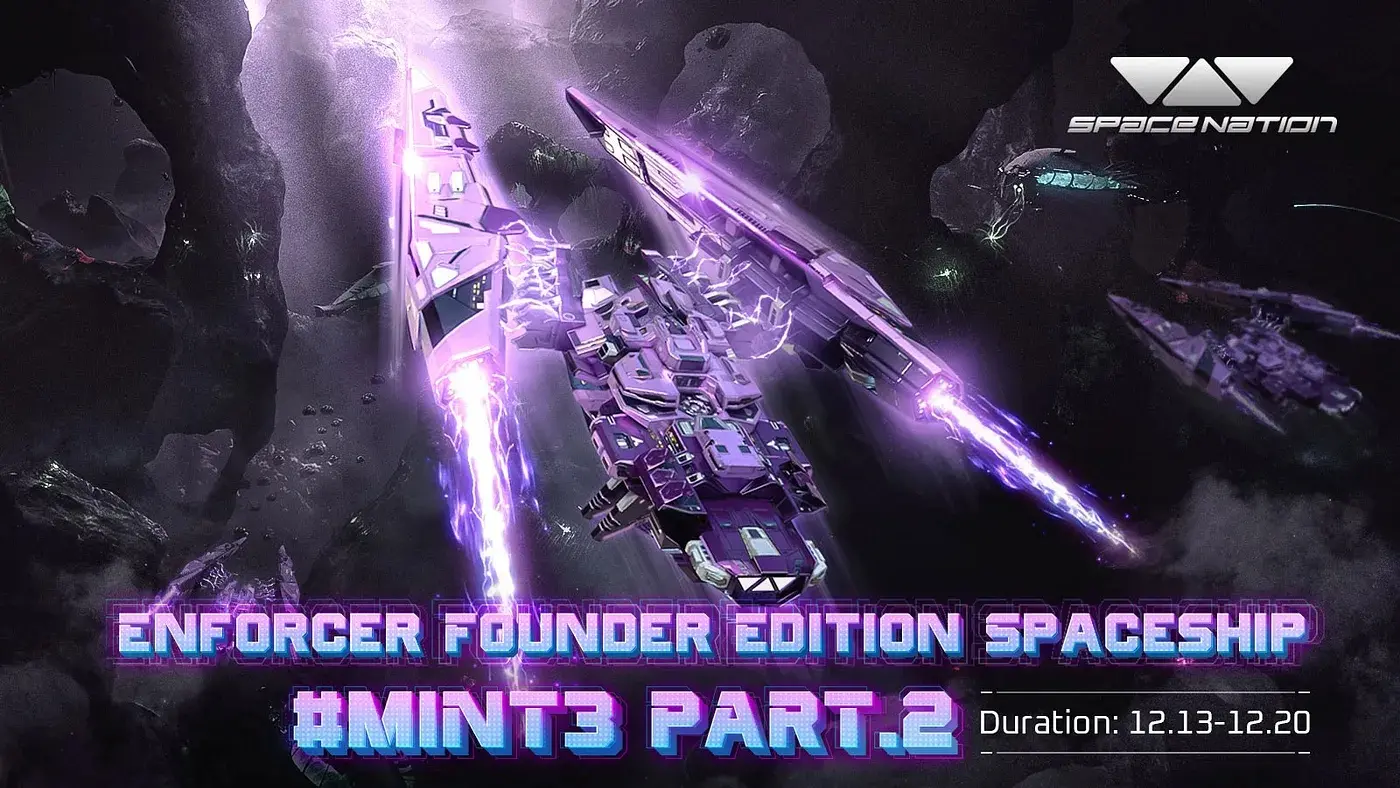
● Limited edition T1 spaceship, standing out with superior firepower compared to similar products
● Holding EFEP guarantees eligibility for beta testing, providing exclusive early access and opportunities to accumulate OIK through the achievement system.
Total supply: 1155
Mint price: Whitelist 0.02 ETH; Public sale 0.03 ETH
Floor price: 0.275 ETH
Game mechanics revolve around the following three types of spaceship equipment, using roles of manufacturers and arms dealers to complete the mining-production-consumption logic loop:
- Mining Ships
This mining is different from others; paired with high-explosive mining ships, high damage to ores is required to have a chance of obtaining drops. The mining drops include Dark Rock, Starfall, Tritium, and with good luck, Argon. Miners can list them in the auction house to exchange for CHR.
Total supply: T1 level 900 / T2 level 600 / T3 level 300, currently T1 is released.
CosmocraftV mining ship 900
Cosmocraft includes tickets for T2 and T3 mining ships but cannot be used yet.
Mint price: 100U
Floor price: T1: 0.5 ETH / T2: 0.9 ETH / T3: 1.4 ETH / CosmocraftV: 0.9 ETH
- Combat Ships
Complete main and side quests, defeat bosses, sell equipment; engage in PVP, participate in guild wars/tournaments, requiring higher investment and strategic choices.
● Brave: Increases efficiency and allows for quick course adjustments, enhancing maneuverability.
● Killer: Uses standard design. The high speed and agility make the fighter have strong space combat capabilities.
● Executor: Born from a space technology company in the Oikos galaxy.
Generation method: Players create them in-game; currently, there are 3 T2 ships available.
Current total supply: 405
Floor price: 151.8 IMX
- Exploration Ships:
By exchanging the information they obtain while exploring known and unknown space boundaries, players can create treasure maps and sell them to guilds or others for rewards.
Progress: Not yet disclosed, coming soon.
3. Token Economy and POC Model
Token Structure — CHR and OIK
The economic model in the white paper appears complex, but its core consists of three aspects:
- NFTs: Assets both in and out of the game, which can participate in staking for appreciation and enhance game efficiency.
- CHR: In-game token
From the supply side, it will be issued in unlimited quantities, with future considerations for on-chain; using time series and Fisher's formula to periodically control token output to achieve dynamic balance in token production.
(Note: M is the average amount of money in circulation over a given period; V is the velocity of money; P is the price level or weighted average of various goods; T is the transaction volume of various goods.)

From the demand side, CHR consumption scenarios include training, production, purchasing in-game items, transaction fees, buyback activities, etc., which are quite compatible with game mechanics.
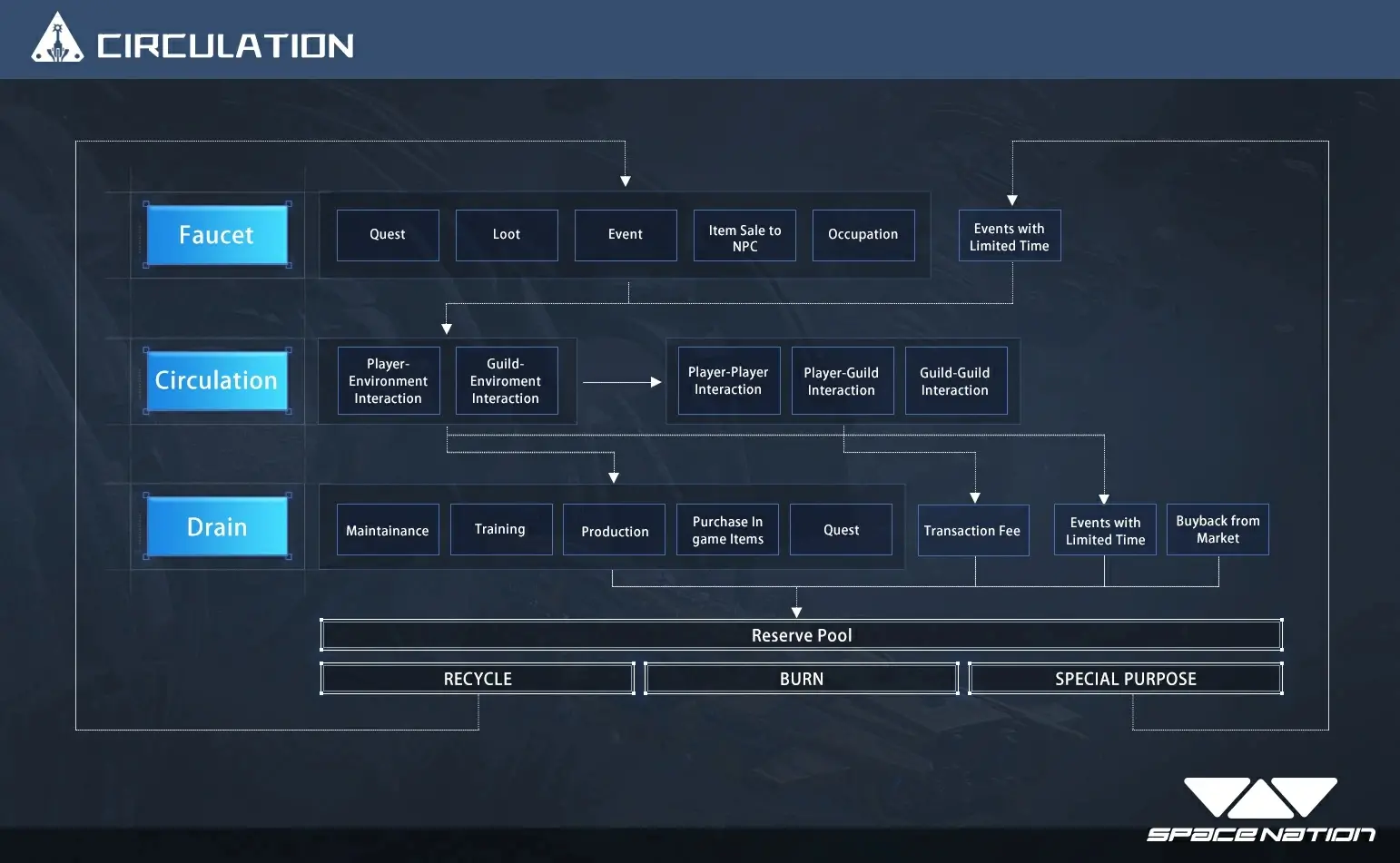
- OIK: Governance token, total supply of 1 billion, unlocking over 10 years, with a clear TGE.
Main uses include: participating in ecological governance, obtaining airdrop eligibility, and can be directly used to purchase officially issued NFTs. There will also be incentives (airdrops) and staking gameplay. The existing favorable NFT situation will also enhance the expectations for OIK.
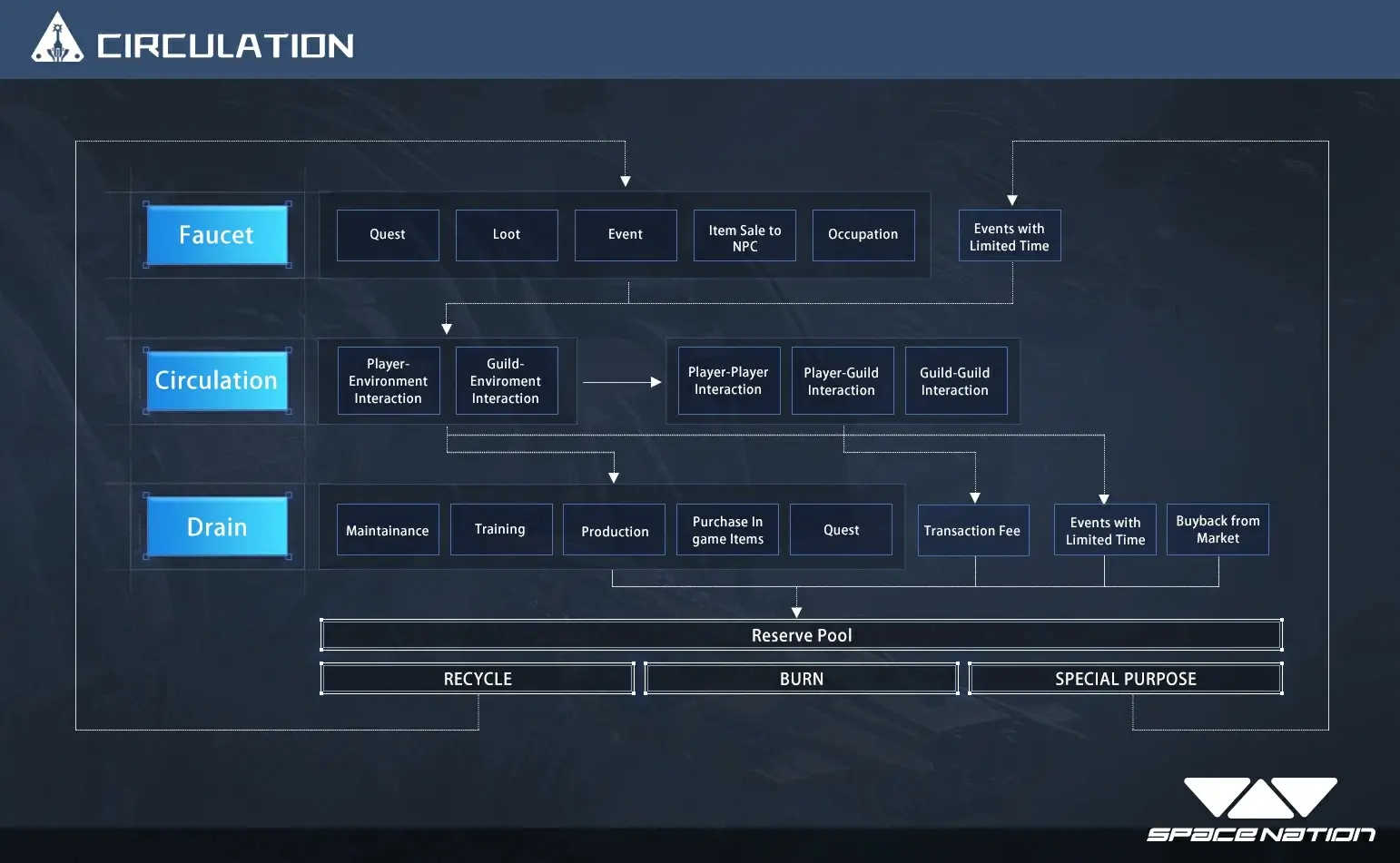
In terms of structure:
- Game: 50%
- Core Team: 16%
- Seed Round: 12.6%
- Ecosystem: 5%
- Marketing: 5%
- Private Sale: 4.4%
- Advisors: 4%
- Public Sale: 3%
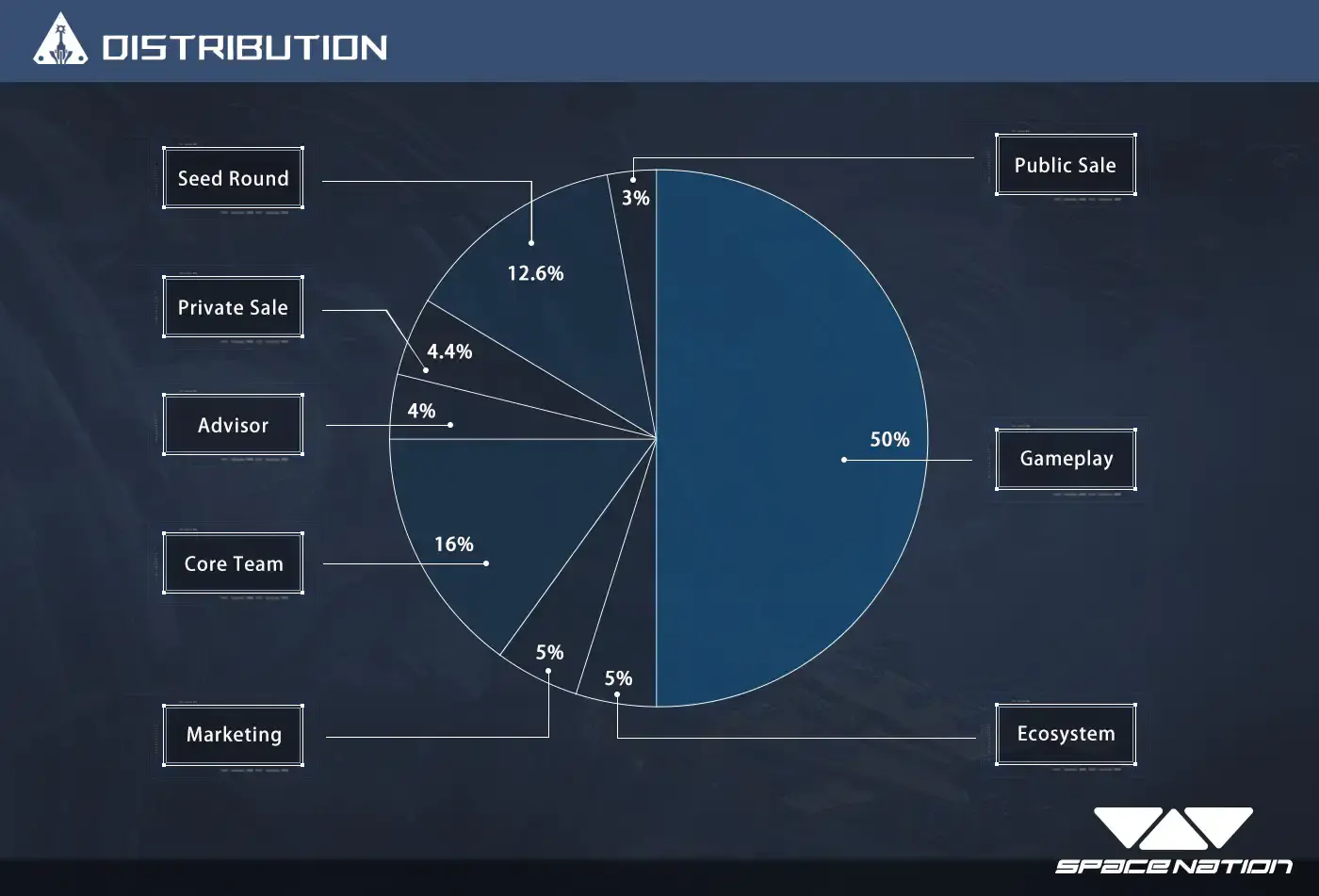
Behind the POC Model — Addictive Operation
As is well known, chain games once fell into a death spiral, leading many to closely monitor economic models whenever a new game was launched, attempting to judge the game lifecycle from aspects like issuance, distribution, and feasibility. However, it is often found that "the ideal is beautiful, but reality is stark." On the other hand, can the long-term operation of a game really only be assessed by the implementation of its economic model? Can games not continue once the speculators retreat?
Therefore, I would like to introduce Nir Eyal's product logic-based "addiction" model to explore the merits of the POC model proposed by Space Nation through a gamified perspective.
What is Space Nation's POC model?
POC stands for Proof of Contribution mechanism. Space Nation plans to allocate 50% of $OIK to all game contributors over a 10-year period through gameplay, meaning everyone participating in the game.
It is a complex, reliable, and fair system for measuring players' contributions to the game. In this system, players' assets, identities, memorabilia, activity, labor, interactions, combat power, and luck will be assessed and calculated into comprehensive Contribution Points. Players will be allocated $OIK from the Gameplay Airdrop Pool weekly based on their points.
In the entire Space Nation game ecology, the POC mechanism becomes the main way to obtain $OIK. It can be said that it provides variable incentives by measuring user actions, investments, and outputs, which we will analyze in detail using the model below.
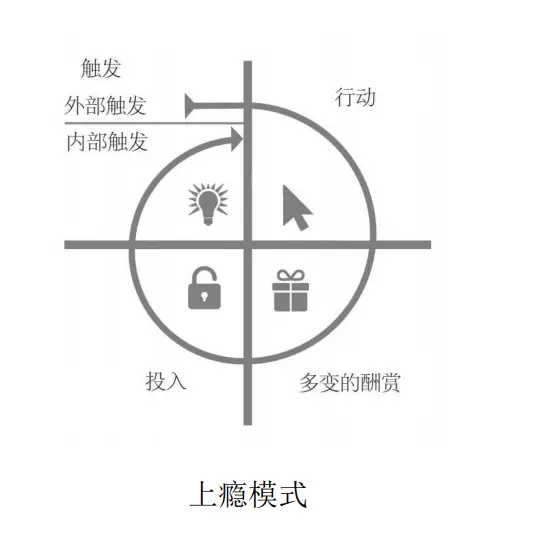
Translating this model into the game:
Trigger: It can be seen that players receive cues that generate motivation to play the game.
Action: This can be seen as the player's gameplay process.
Reward: This can be viewed as the reward mechanism, which is the prize for players achieving their goals; the rewards here must be variable.
Investment: This can be seen as players' willingness to provide their personal data and some capital, spending their time, energy, and money, which constitutes the investment.
For Space Nation, in the trigger phase, it can be said to be like a fish in water: a strong team, powerful financing background, years of game preparation, and AAA testing experiences — these labels serve as external triggers that can easily engage users into the action phase. Especially with the rendering of epic battles and the involvement of Hollywood directors, how could it not attract sci-fi enthusiasts?
In the second phase of action, user actions need to consider two aspects: one is the goal, and the other is the ability.
- Goal is to give users a clear objective to participate in the game.
- Ability is to enable users to master the game, which can be simplified to the design of difficulty.
Breaking it down, the first step is to guide users in determining their goals, and the setting of game goals ultimately involves layering and segmenting the game objectives.
It determines what players should pursue, what challenges they face, and what difficulties they need to overcome. A good game goal allows players to immediately understand their tasks, whether it is to defeat teams, take down a "Boss," sell equipment, or rank high in guilds. Space Nation Online aims to construct a virtual space society. In this society, players can choose different play styles based on their preferences, such as miners, fighters, pirates, explorers, mercenaries, manufacturers, arms dealers, and rulers. If players seek stability, they can take the miner route; if they have stronger analytical skills, they can become information-selling explorers; if they can accept risks and excitement, they can play as fighters or join established guild systems for greater rewards.
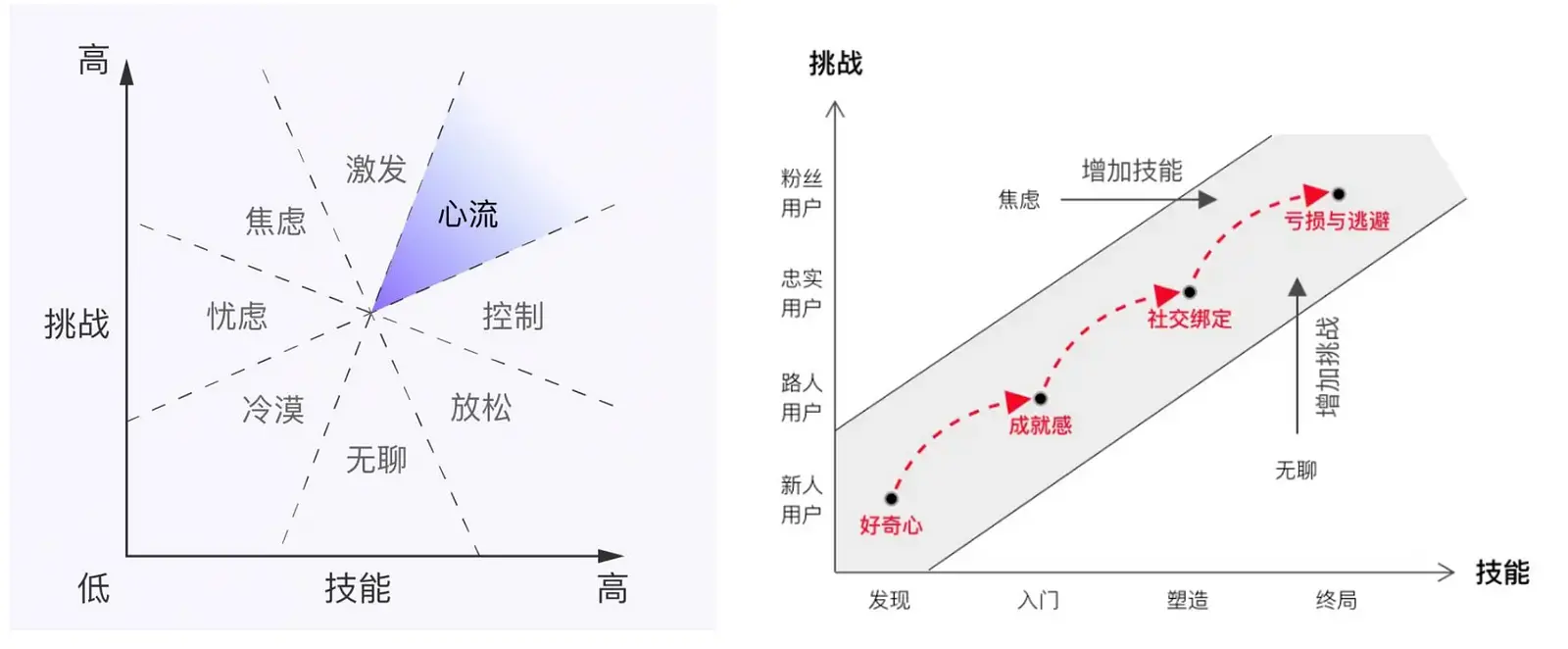
Next, "ability" involves controlling the game's "difficulty." Perhaps the themes of "sci-fi," "combat," and "AAA" might make some users worry about not being able to "hold" it. Here, Mihaly Csikszentmihalyi's flow model (game difficulty-emotion model) is introduced. When players' skills exceed the challenges presented by the game, they feel bored; when their skills are below the challenges, they feel anxious. Therefore, Space Nation provides tiered challenges and goal settings. Thanks to the POC system and the accompanying active tasks and achievement systems in each cycle, users are guided from shallow to deep to thoroughly understand the game.
Just like losing weight or memorizing vocabulary, the end goal of how many pounds lost or how many words memorized may seem daunting at first glance, but breaking it down into achievable, short, and detailed data makes players feel that it is "feasible," allowing them to "dare" to take action.
It can be said that Space Nation has clearly defined the path, and users can choose their goal direction based on their situation, ultimately breaking down that goal.
Thirdly, many Web3 games actually stumble on the setting of "reward pools." In the early stages, attracting a large number of "gold diggers" to empty the reward pool greatly tests the operational rhythm of the game team, so the initial mechanism design is crucial.
Exploring the essence, Web2 games also have "POC." The seven-day/twenty-one-day tasks for newcomers, special effect chat bubbles, badges for completing tasks, contribution progress bars within guilds/communities, etc., are all rewards designed for achieving goals, whether they serve as a bridge or a connecting thread over long periods.
So how does Space Nation do it? As a team deeply engaged in Web2 games for many years, they have long understood the achievement aspect. The system has an achievement system, and completing achievements allows players to enjoy bonuses from the achievement section in each cycle, which is a clear fixed reward.
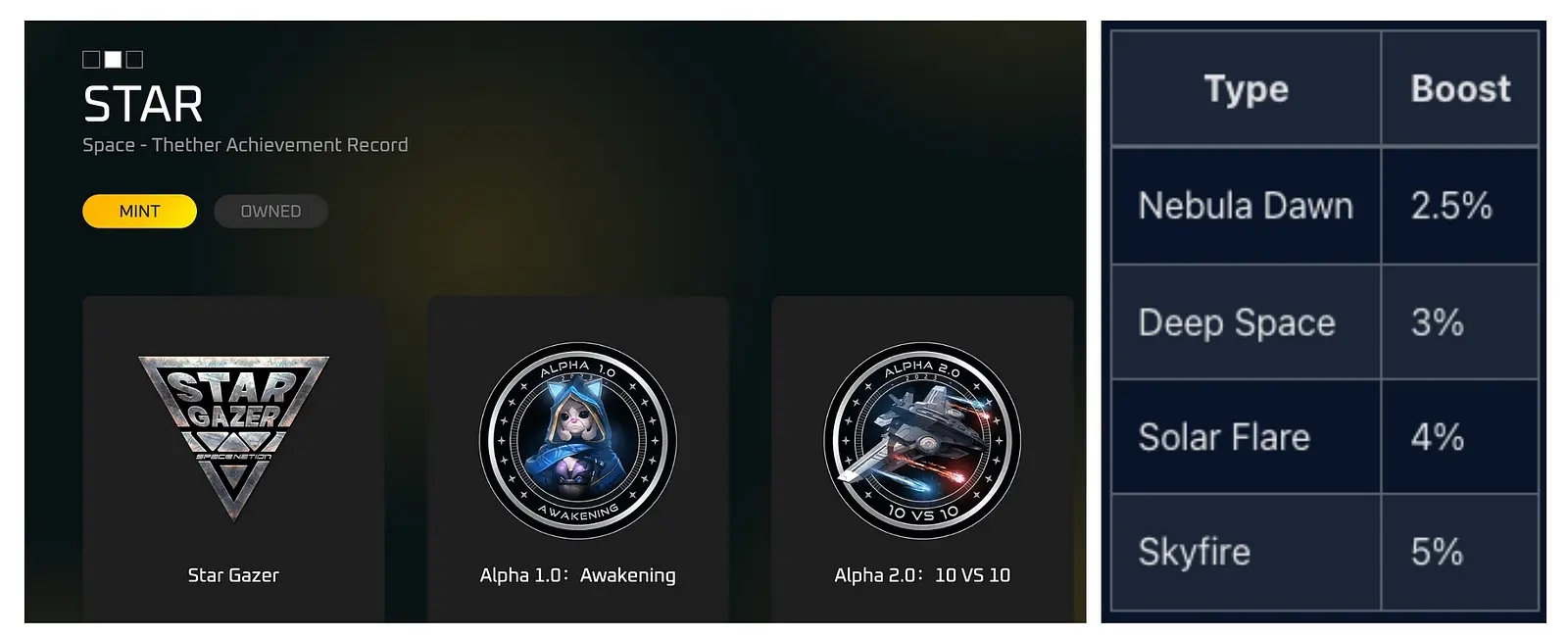
Looking at the Web3 gold mining incentives, since the output of OIK is clear and can be controllably allocated within cycles, the token price is also relatively stable. Considering the actual incentives players receive, according to the calculation rules mentioned in the official medium:
OIK Reward = (Individual Season Score / Total Player Score) * OIK Allocation Individual Season Score = Completed Active Points / Target Active Points (0.1 Completion-type Achievements + 3.25 * Holding-type Achievements) * Achievement Bonus
Each player completes corresponding active tasks based on their goals (abilities) within each cycle, and OIK distribution is based on season scores and the overall performance of the player community throughout the season. Players can clearly know that they can obtain OIK, but the amount may be a surprise, making it impossible to set expectations. Predictable rewards give players direction, while exceeding expectations creates addiction and excitement.
Thus, players will adjust their "investment" strategies to obtain incentives. They will measure their investments, assess their outputs, and determine their position within the entire system. This leads to different production-consumption strategies and even the potential for external spirals such as forums. Ultimately, whether Space Nation can balance the economic cycle within the game remains to be seen. However, logically speaking, this model has the potential to succeed.
4. Financing & Team
Creative Team
Space Nation is composed of a team that has long been engaged in MMORPG games. The team members' information is clearly disclosed, with over 90 experienced game developers and operators in Web2, and a strong narrative force joining. Here are the core team members:

- Jerome Wu: Co-founder and CEO, the first product manager for World of Warcraft in China, worked for World of Warcraft for 10 years, serving over 100 million WoW users, and has also participated in well-known games like StarCraft II and Hearthstone. Formerly the Chief Operating Officer of Airborne Games, Vice President of Baidu Games, and President of 360 Games, he has been rooted in the gaming industry for over 20 years and will undoubtedly bring the gaming genes and resources accumulated in Web2 into Web3 game development.
- Roland Emmerich: Co-founder and co-creator, a well-known Hollywood director, famous for disaster films such as "Independence Day," "The Day After Tomorrow," and "2012." His work on space-themed films like "Noah's Ark," "Universal Soldier," and "Stargate" has also showcased his content production capabilities in sci-fi space themes, aligning well with Space Nation's narrative background.
- Tony Tang: Co-founder and Game Director, with over 17 years of experience in the gaming industry. He specializes in MMORPGs and has participated in the product strategy and release of Warframe, previously serving as Senior Vice President and R&D Director at Leyou Technologies.
- Marco Weber: Co-founder and Chief Strategy Officer. As a well-known producer and entrepreneur, he co-founded the company Vrenetic with Roland Emmerich and produced "Igby Goes Down" and "The Thirteenth Floor," while also launching the next-generation mobile social media platform Vresh, gaining insights in content production and social media.
Investors
The project costs up to 50 million yuan, and the specific financing amount has not been disclosed. It has received investments from Immutable, Foresight Ventures, Lighthouse Capital, SevenX Ventures, HashKey Capital, Arcane Group, Initiate Capital, JDAC Capital, Assembly Partners, and Cristian Manea, among others.
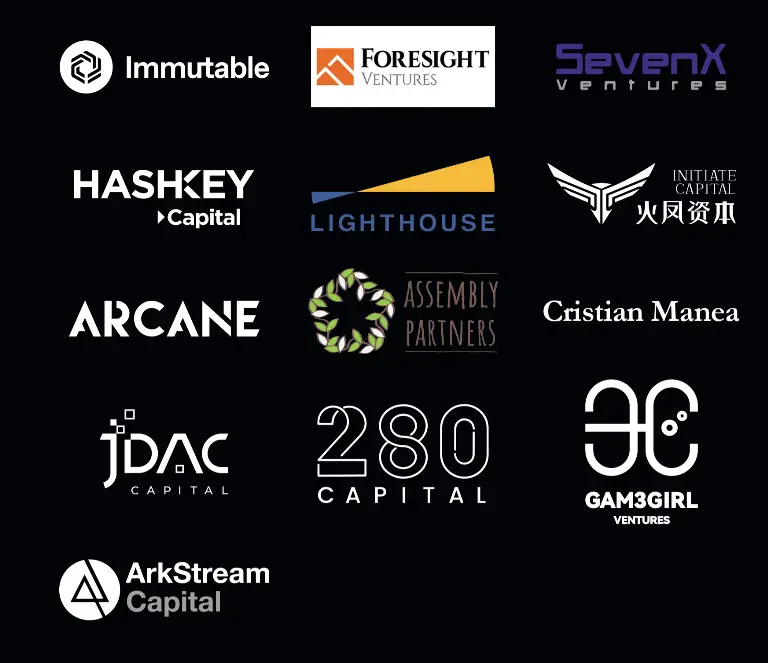
5. Roadmap
According to the latest official white paper, the roadmap is as follows:
- May 2023: Release game white paper
- August 2023: Alpha Gate launch
- August 2023: Alpha Test I launch
- September 2023: Alpha Test II launch
- December 2023: Alpha Test III launch
- March 2024: Prime Navigator Release
- April 2024: Closed Beta I launch
- June 2024: Closed Beta II launch
- Summer 2024: Soft Launch
References:
- White Paper: https://spacenation.online/whitepaper/
- Understanding Space Nation's asset structure and gold mining logic in one image: https://x.com/leslie_bit/status/1770628035416567915
- Space Nation game experience report: https://www.coinonpro.com/news/toutiao/276955.html
- Addiction: The four product logic principles that cultivate user habits: https://book.douban.com/subject/27030507/








